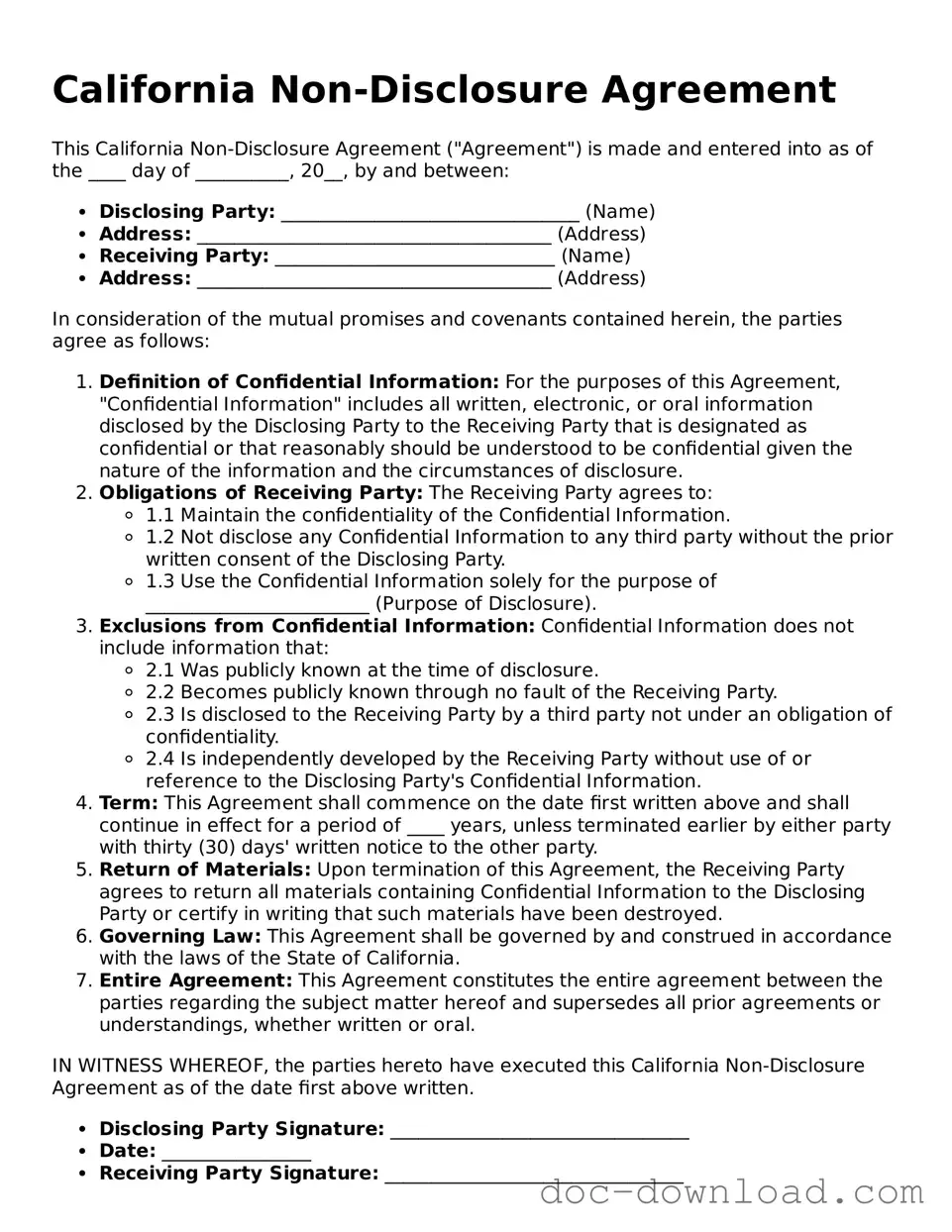A Confidentiality Agreement is very similar to a Non-disclosure Agreement (NDA). Both documents aim to protect sensitive information shared between parties. The main difference lies in the scope and context of use. A Confidentiality Agreement can cover a broader range of information and is often used in various business situations, while an NDA typically focuses on specific proprietary information. Both agreements create a legal obligation to keep shared information private.
A Non-compete Agreement shares some similarities with an NDA. While the primary purpose of a Non-compete Agreement is to prevent individuals from entering into competition with a former employer, it often involves the sharing of confidential information. When an employee leaves a company, they may have access to sensitive information that could benefit a competitor. Thus, both documents serve to protect business interests and confidential data.
A Non-disclosure Agreement (NDA) is also essential for ensuring that sensitive information remains confidential in various professional contexts, as outlined in the Non-disclosure Agreement form. This document not only protects proprietary information but also helps establish a trusting environment among parties engaged in business dealings. By clearly defining the terms of confidentiality and the consequences of breaches, an NDA becomes a key instrument in fostering and maintaining healthy professional relationships.
A Non-solicitation Agreement is another document that aligns closely with an NDA. This agreement restricts one party from soliciting clients or employees of another party. Like an NDA, it protects sensitive information, particularly regarding customer lists and employee details. The goal is to maintain business relationships and prevent unfair competition by ensuring that proprietary information remains confidential.
An Employment Agreement often includes confidentiality clauses similar to those found in NDAs. When a new employee joins a company, they may have access to trade secrets and other confidential information. The Employment Agreement can outline the employee's responsibilities regarding this information. Both documents are designed to protect a company's interests and ensure that sensitive information is not disclosed.
A Partnership Agreement can resemble an NDA, especially when partners share sensitive business information. In a partnership, trust and confidentiality are crucial. The Partnership Agreement may include provisions that require partners to keep shared information private, similar to an NDA. This helps maintain the integrity of the partnership and protects each party's interests.
Finally, a Service Agreement can incorporate confidentiality provisions akin to those in a Non-disclosure Agreement. When a service provider works with a client, they may gain access to confidential information. The Service Agreement may outline the obligations of the service provider to protect this information. This ensures that sensitive data remains secure while the service is being performed.
